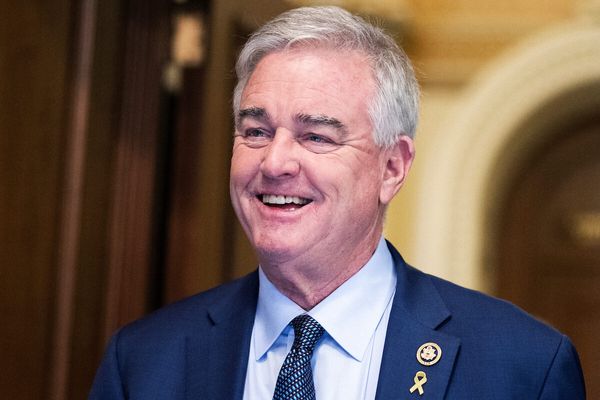
Nepal is in free fall. Prime Minister K P Sharma Oli has resigned as youth-led protests engulfed Kathmandu. Deputy PM and Finance Minister Bishnu Paudel was beaten up by protesters. Former PM Khanal’s wife was set ablaze. And Nepal's army chief is now set to take control amid a political vacuum eerily reminiscent of the Bangladeshi uprising.
What began as Gen Z-driven leaderless protests against corruption, unemployment, nepotism, and social media restrictions have now spiralled into chaos. While the demonstrations were rooted in legitimate grievances – youth anger at political dynasties, economic inequality, and a social media ban that forced digital dissent onto the streets – there are signs of violent elements taking over. Though substantive evidence is yet to emerge about their role even though authorities earlier pointed to “vested interest groups”.
Yet when thousands initially took to the streets on Monday, resulting in 19 deaths and hundreds of injuries, Indian television channels completely missed the real story. Instead of covering the structural inequalities driving the unrest or the state violence that followed, anchors across News18, Times Now Navbharat, DD News, NDTV, and Aaj Tak stripped the movement of its core meaning. Here’s how they got it wrong:
From protest to conspiracy
Instead of reporting on corruption, unemployment, and the social media ban that sparked the protests, Indian anchors painted the demonstrations as pre-planned operations or deep-state conspiracies. Nepal's youth were reduced to pawns in elaborate plots rather than citizens with legitimate grievances.
News18 India’s Aman Chopra questioned whether this was “the world’s first so-called Gen Z movement” that started suddenly, or if there was “a planned toolkit behind it, some organised conspiracy”. He repeatedly suggested the youth were “instigated and mobilised” rather than acting on genuine frustrations with their government.
Times Now Navbharat’s Sushant Sinha went further, arguing the protests were “timed to India’s global rise” and “staged on a geopolitical chessboard”. What began as a movement against corruption became a story of orchestration and manipulation, erasing the agency of Nepal’s youth entirely.
Blame the ‘foreign hand’
Whether it was Aman Chopra, DD News’ Sudhir Chaudhary, or Aaj Tak’s Anjana Om Kashyap, most channels invoked the evergreen bogey of a “foreign hand” – linking the protests to Pakistan, China, the US, NGOs, or even corporate funders like Coca-Cola. This tried to shift the story from Nepal’s governance crisis to a geopolitical thriller.

On DD News, Sudhir suggested that “any foreign power can very easily take advantage” of regional instability, adding that “there are many theories suggesting that indeed some foreign power is working to destabilise these countries”.

Sushant Sinha claimed that “Nepal has been turned into an arena where the struggle for supremacy between China and America is taking place,” completely ignoring that protests emerged from domestic issues like the wealth gap. He went a step further, spinning the unrest as a conspiracy timed against Narendra Modi’s supposed global rise: “Jis waqt Narendra Modi global politics me dhamaake karte jaa rahe hai, jis waqt Bharat ke saamne Cheen biccha jaa raha hai, …. usi waqt Bharat ke pados me zabardast aag lag gayi". (At a time when Narendra Modi is making waves in global politics, when China is positioned in front of India…at that very moment a huge fire has suddenly erupted in the neighbourhood.)
On Republic TV, Arnab Goswami called the protest a pure CIA plot. He directly blamed US President Donald Trump for toppling the government. “Is it even conceivable that America is not behind this…the anarchy playbook of the CIA is very real.”
On Aaj Tak, Anjana Om Kashyap went so far as to name a specific NGO called ‘Ham Nepal,’ claiming it received Rs 20 crore in “financial support” from Coca-Cola, Viber, and other companies to organise the “violent protests”.


Gen Z as the addicted
Sections of the media repeatedly portrayed Nepali youth as restless “data junkies” throwing tantrums because their social media was taken away. Structural issues like unemployment, poverty, and political corruption were sidelined in favour of mocking stereotypes about Gen Z’s obsession with Instagram and TikTok.
On DD News, Sudhir reduced the entire movement to a Gen Z tantrum, saying: "You can take away their atta (flour), but don’t take away their data. The real food for the youth is no longer flour, but data.” He portrayed protesters as “obsessed with data and the internet” rather than acknowledging their genuine grievances.
Anjana Om Kashyap spent considerable time highlighting that Nepal’s undergraduate students have an “average screen time of 7 hours 12 minutes per day,” emphasising that "most of Nepal's youth spend more time on their phones than sleeping."
Aman Chopra presented data about “Gen Z’s heavy online presence” and raised suspicion about their ability to coordinate protests, as if civic organisation itself was inherently suspicious when done by young people.
Law and order > Lives lost
Channels dwelled on visuals of stone-pelting students and violence on the streets, ignoring that 19 people had died and hundreds were injured on the first day alone. The state crackdown was sanitised, while protesters were criminalised.
NDTV’s coverage relied heavily on full-screen visuals of students throwing stones, repeatedly shown with graphics that reinforced the image of violent protesters. This one-sided presentation reduced the movement to mere lawlessness, completely ignoring the broader context of state violence that had killed 19 people.
Across channels, the focus remained on property damage and street violence while the human cost – deaths, injuries, and the underlying desperation driving people to risk their lives – was largely ignored or minimised.
Monarchy hype amplified
Some anchors falsely framed the movement as a demand for monarchy or Hindu Rashtra. This erased the protesters’ actual calls for accountability, transparency, and stronger democracy – not weaker institutions or a return to royal rule.

NDTV’s Syed Suhail suggested that “Nepal’s people want monarchy” and claimed there was a “demand to make Nepal a Hindu state again”. This was misleading at best – protesters were demanding a well-functioning democracy, not the return of authoritarian rule.
Anjana Om Kashyap similarly argued that people were so “disillusioned with democracy that they wanted the return of Hindu Rashtra monarchy,” misrepresenting the actual demands of protesters who were calling for more democratic accountability.
All this while, channels skimmed over Nepal’s real challenges: the wealth gap that forces nearly one in 10 Nepalis to work abroad, rampant nepotism where politicians' children live lavishly while most struggle with poverty, and a migration crisis driven by lack of opportunities at home. Instead, they gave primetime space to wild theories about “influencers boosting GDP” and foreign conspiracies.
Our latest Sena project tracks how elites take over public spaces in urban India, and the price that’s paid by you. Click here to contribute.
Newslaundry is a reader-supported, ad-free, independent news outlet based out of New Delhi. Support their journalism, here.







